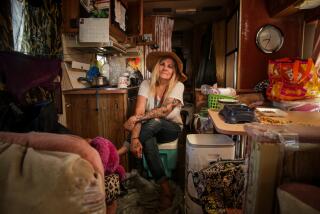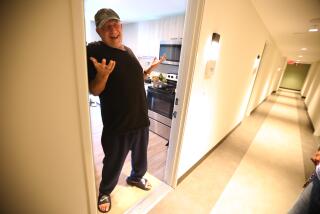HOMELESS WATCH : Public Health
- Share via
The streets of downtown Los Angeles are home, literally, to many of the city’s poor, and within that open-air home nearly every dark corner has been turned into a public toilet.
Though these “toilets” do not appear as a distinct item on any municipal budget, their cost to public health and to the social and physical environment is real enough. The stench, at some points, is overwhelming even to the passing motorist. But what are the homeless to do? They are unwelcome in the semipublic restrooms of office buildings, hotels and restaurants. Increasingly, even the open-air “toilets” of downtown are being walled in and fenced off.
For the problem of human waste, the toilet is, obviously enough, the only available solution. Public toilets, like the ones that were to have gone into use on Skid Row starting last Friday--thanks to an agreement brokered by Alice Callaghan, an advocate for the homeless--may not be the only public facilities imaginable in the downtown area; but if not these toilets, then some toilets.
We regret that this agreement was shot down when Mayor Tom Bradley yielded to objections by area business owners led by Councilman Richard Alatorre.
There’s no denying that public toilets would attract drug addicts and prostitutes as well as the homeless or that they would require police attention. But every one of those objections can be raised against the dark-corner toilets already in use. Callaghan’s proposal, as an improvement on the status quo, was eminently worth a try. We urge that it be reconsidered.
More to Read
Sign up for Essential California
The most important California stories and recommendations in your inbox every morning.
You may occasionally receive promotional content from the Los Angeles Times.










